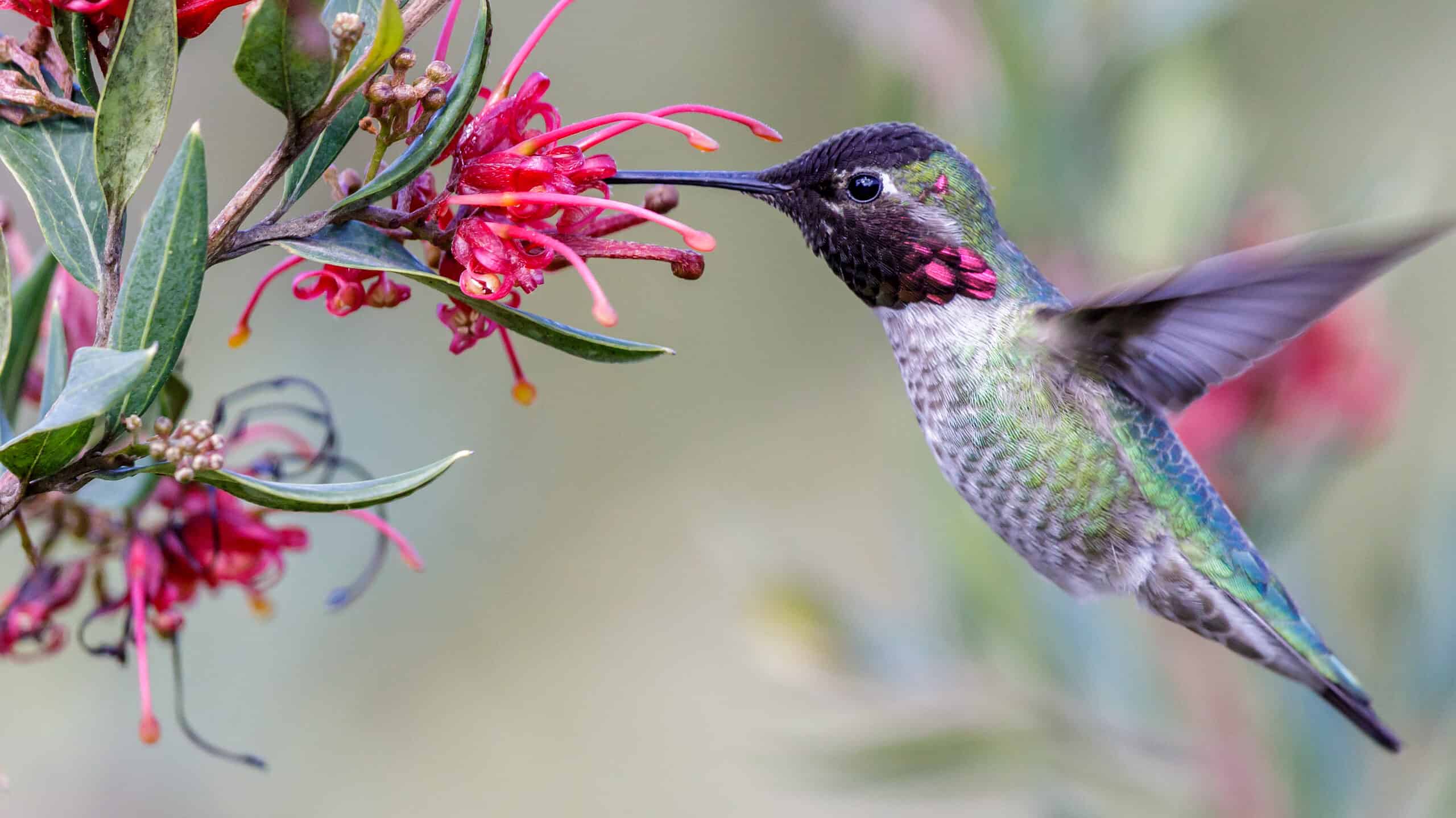Hummingbirds are an extraordinary family of birds found solely in the New World, with roughly 338 different species. They are exceptional among birds due to their capacity to hover for prolonged periods of time and sometimes even fly backward.
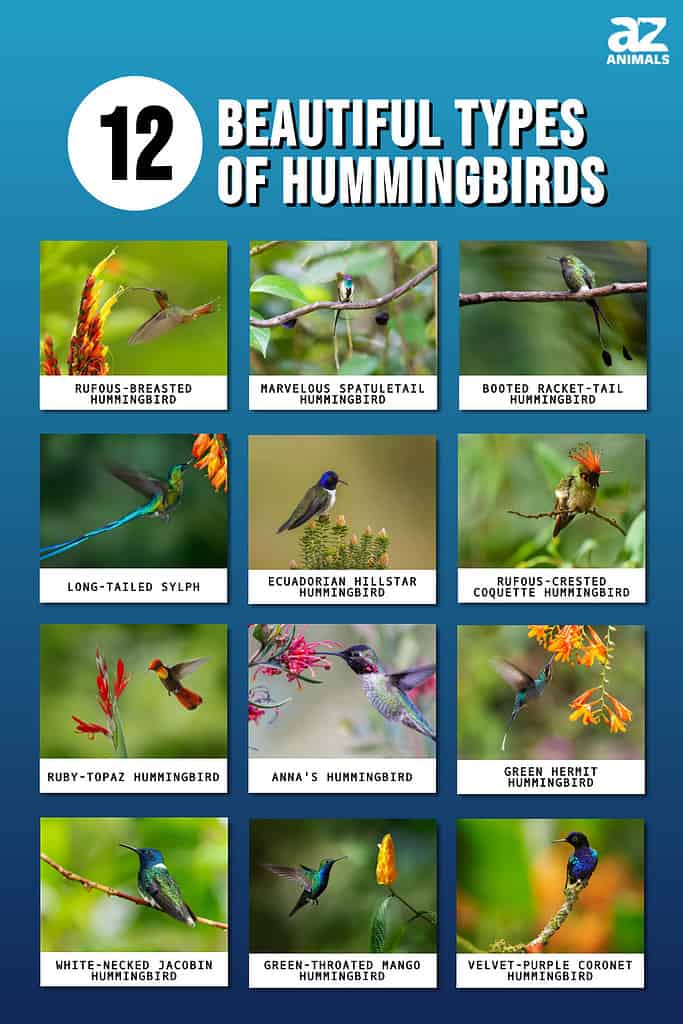
They make up for their lack of size with energy, with the Ruby-throated Hummingbird reaching the highest level with its amazing capacity to flutter up to 200 times per second during mating rituals.
Although they are small, male hummingbirds are some of the world’s flashiest birds because they frequently display a variety of dazzling feathers that are used to entice partners. There aren’t many environments these versatile birds can’t live in, from the rainforest to the southernmost point of South America. Let’s take a look at some of the most stunning species of these unique birds.
Rufous-Breasted Hummingbird
The hairy hermit, also known as the rufous-breasted hermit (Glaucis hirsutus), is a finicky eater. It only consumes the nectar of flowers whose corolla, the whorl of petals that descends into the nectaries, is the exact length and curve of its bill.
It’s fascinating to observe that the bills of males and females vary in shape thanks to evolution, which, according to scientists, reduces rivalry for food. These birds have reddish-brown underbellies and are bronze-green in color. They are widely dispersed from Panama to the Caribbean.
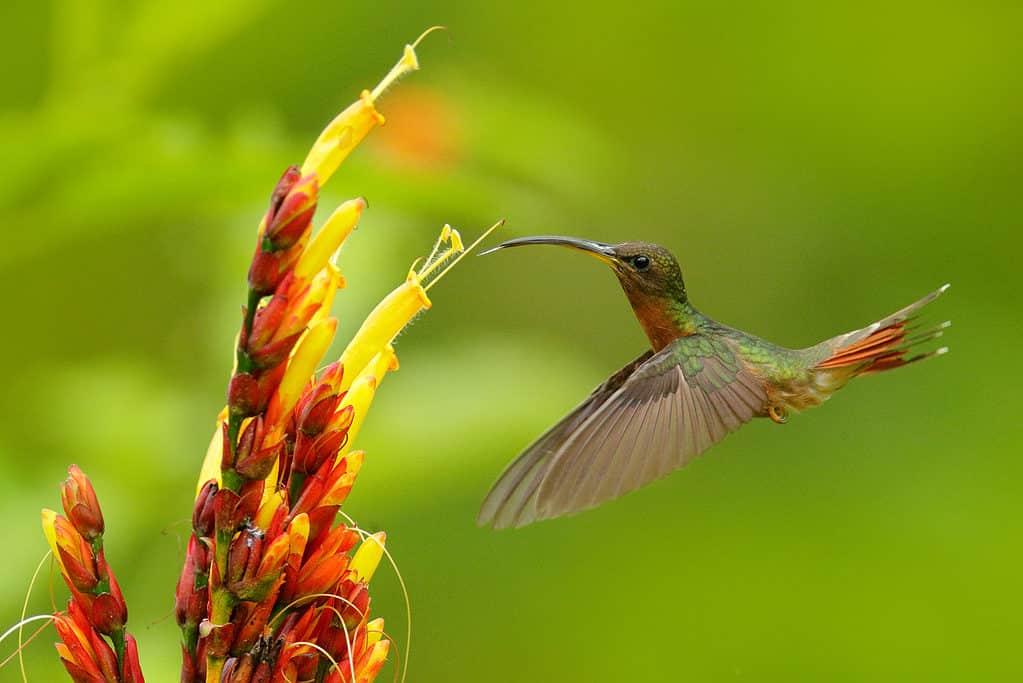
The hairy hermit, also known as the rufous-breasted hermit (Glaucis hirsutus), is a finicky eater.
©Ondrej Prosicky/Shutterstock.com
Marvellous Spatuletail
Like many hummingbird species, such as the Black-eared Fairy and Rainbow-bearded Thornbill, the Marvelous Spatuletail has a moniker that is both endearing and accurate. The male of this adorable tiny hummingbird has bright blue crest feathers, a striking aquamarine gorget, and a black line on its white undersides.
It glows in hues of white, emerald, and copper. The species, the sole member of the genus Loddigesia, was first identified in 1835. It can be found only in northern Peru’s Rio Utcubamba Valley. The Marvelous Spatuletail male really does live up to its name. Two long outside feathers that resemble wire cross one other and culminate in sizable violet-blue plates or “spatules” from the edge of its tail.
The male can individually manipulate each of these unique feathers. They can grow to be three or four times the length of the bird’s body. With aging, tail length changes. The male uses these extraordinary feathers as part of his wooing show.
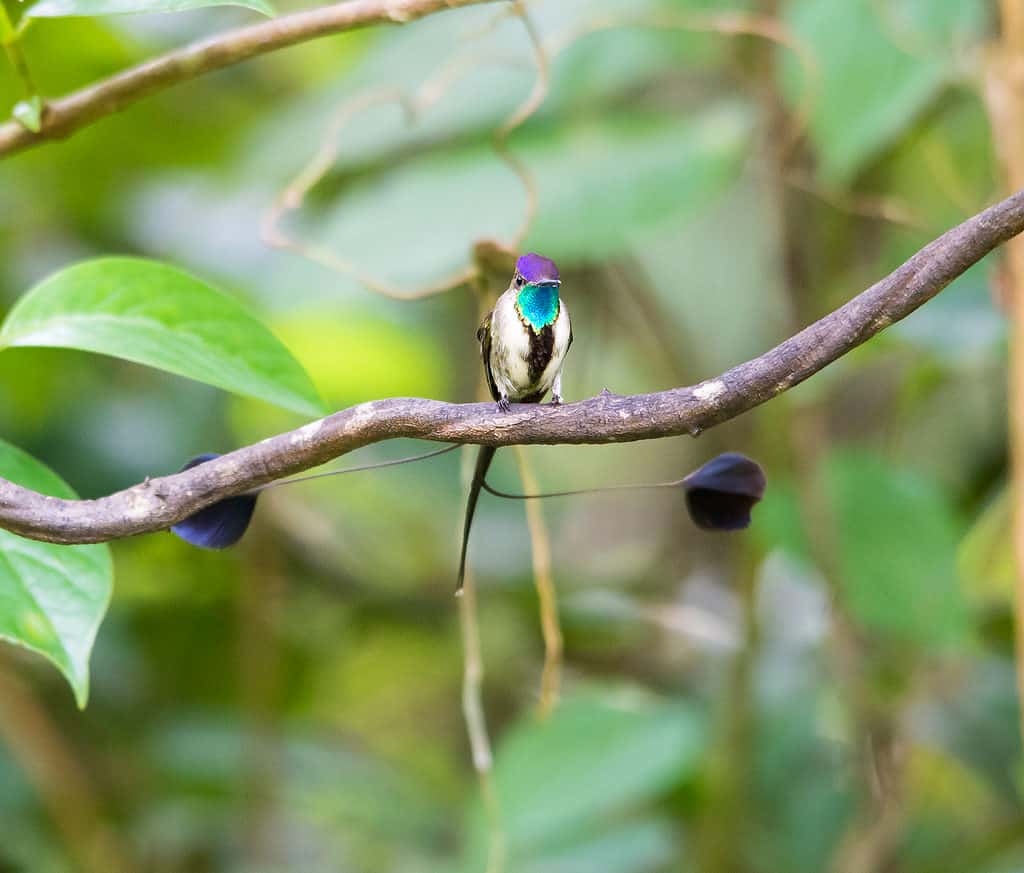
The Marvelous Spatuletail has a moniker that is both endearing and accurate.
©Jorge Yamamoto/Shutterstock.com
Booted Racket-tail
With metallic green feathers and an ornate tail that is longer than the little bird itself, the male Booted Racket-tail is a magnificent hummingbird. The two long feathers on this streamer-like tail, which resembles the Marvelous Spatuletail’s, are topped with pointy azure “rackets.”
While neither sexes have a lengthy tail, both wear “boots” (puffy white leg feathers). Although there is just one species in its genus, the Booted Racket-tail is tightly linked to pufflegs. Many of which are in grave danger of extinction owing to habitat degradation.
When making steep U-shaped dives, males entice females by flashing their leg puffs and slapping their tail streamers together. Both sexes are capable of mating with multiple partners.
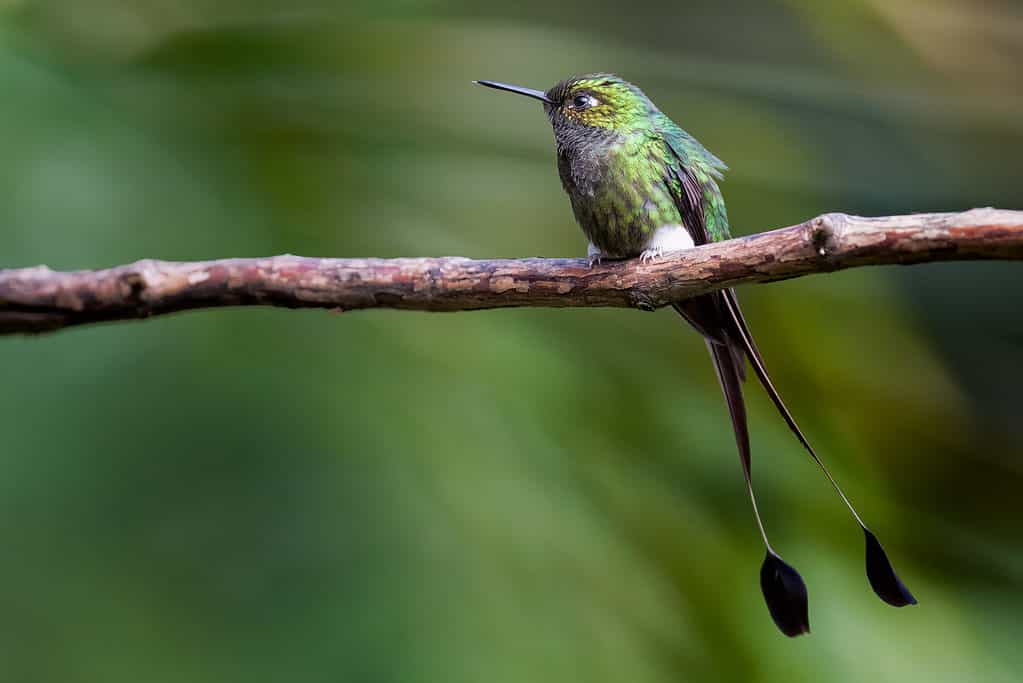
The two long feathers on this streamer-like tail, which resembles the Marvelous Spatuletail’s, are topped with pointy azure “rackets.”
©NozarIsReal/Shutterstock.com
Long-tailed Sylph
The tails of male long-tailed sylphs (Aglaiocercus kingii) are extraordinarily long, measuring about five inches. They are so lengthy that they definitely make the birds’ flight more difficult. In order for males to make it to breeding age, they must be particularly powerful and experienced fliers.
Because those tail feathers are a sign of endurance and fitness, females base their selection of mates on their length. Males also have magnificent blue and green iridescence in their coloration. This bird’s coloring will leave your jaw dropping! High heights are preferred for long-tailed sylphs. From Venezuela to Bolivia, the Andes are where they are most frequently found.
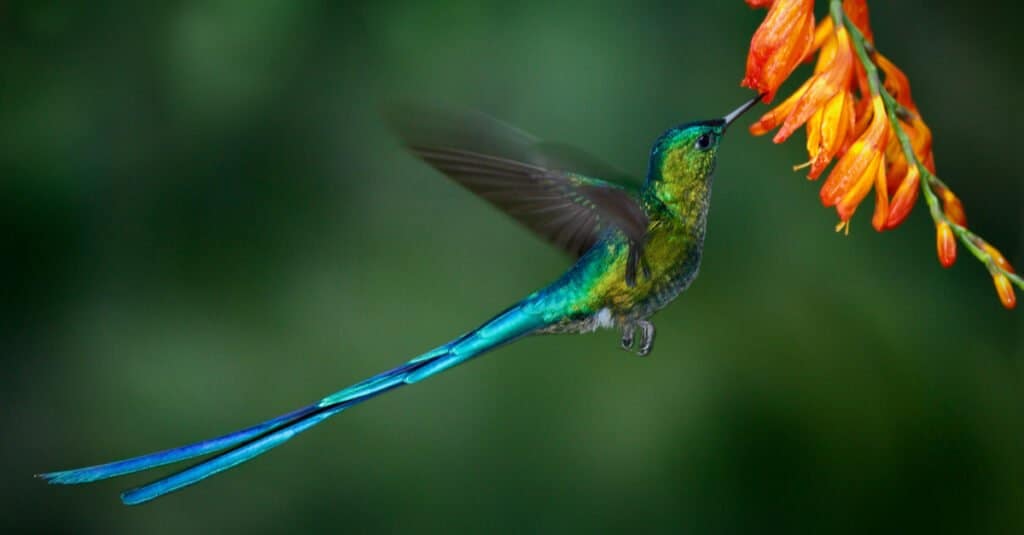
This bird’s coloring will leave your jaw dropping!
©Ondrej Prosicky/Shutterstock.com
Ecuadorian Hillstar
This huge hummingbird inhabits the Andes at very high heights. scarcely reaches far southern Colombia but is almost endemic to Ecuador. A black belly band and a purple hood are features of the magnificent male. The neck of males in central Ecuador has a little green patch.
Females and young birds have muted plumage that is primarily dull green and grayish in color with a streaky neck. The Blue-throated Hillstar is not overlapping. Typically found in páramo close to areas of Chuquiraga plants. These bear vivid orange blossoms in the shape of small pine cones. Pollen can turn the face an orange color. Birds eat from and actively defend their favorite flower areas.
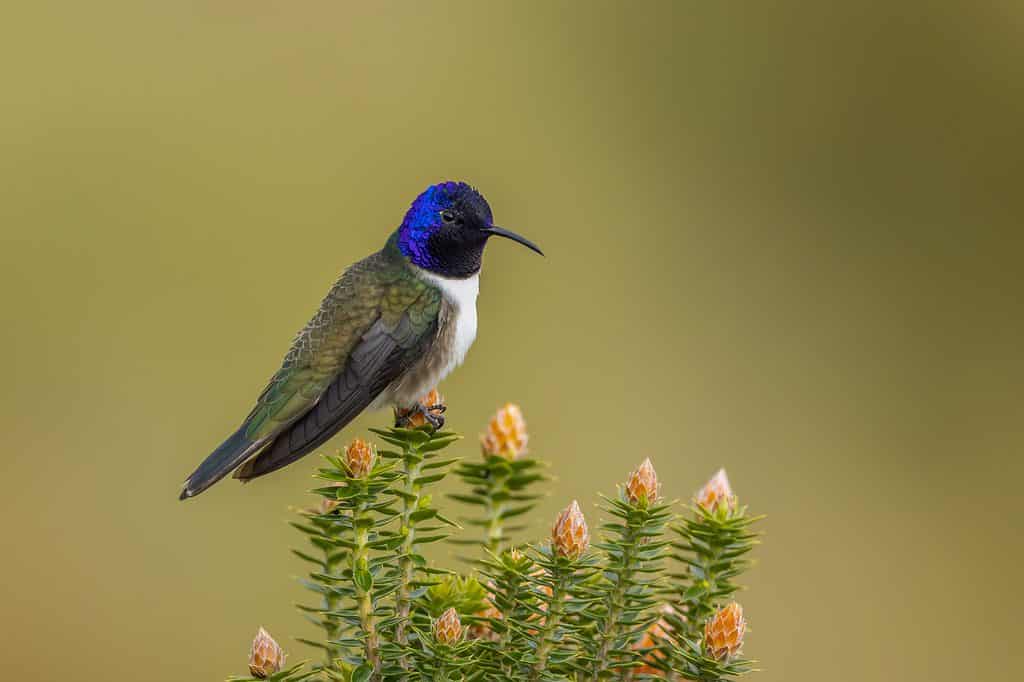
This huge hummingbird inhabits the Andes at very high heights. scarcely reaches far southern Colombia but is almost endemic to Ecuador.
©Wim Hoeck/Shutterstock.com
Rufous-Crested Coquette
The rufous-crested coquette (Lophornis Delattre), one of the tiniest hummingbird species, is only about 2.5 inches long and weighs less than 1/10 of an ounce. Both sexes have red-brown foreheads that are distinctive, but males have more distinct, spiky crests and shimmering emerald necks.
They are widespread in southern Central America as well as throughout South America’s Pacific coast. These omnivorous birds eat both small arthropods and flower nectar.

The rufous-crested coquette (Lophornis Delattre), one of the tiniest hummingbird species, is only about 2.5 inches long and weighs less than 1/10 of an ounce.
©Mark Richard Waller/Shutterstock.com
Ruby-Topaz Hummingbird
The male ruby-topaz hummingbird (Chrysolampis mosquitus) may be highly hostile while defending their territories from rivals despite only weighing .12 of an ounce. In Trinidad, southern Panama, and northern South America wide countryside and meadows are home to these birds.
While females are slightly less vivid and have green neck streaks, males have shiny red crowns and necks and brown upper regions that are covered with a green sheen.
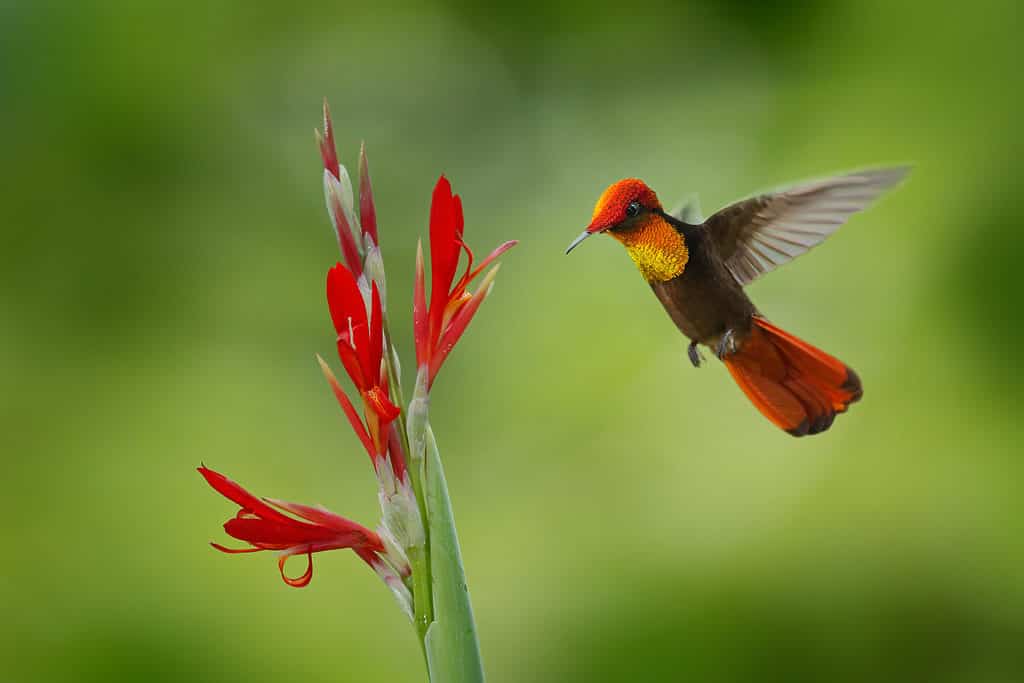
The male ruby-topaz hummingbird (Chrysolampis mosquitus) may be highly hostile while defending their territories from rivals despite only weighing .12 of an ounce.
©Ondrej Prosicky/Shutterstock.com
Anna’s Hummingbird
One of the most prevalent hummingbirds along the Pacific Coast is Anna’s hummingbird (Calypte anna). The males of these birds do intriguing mating dances that involve regularly flying approximately 130 feet in the air and then plummeting down at dangerously high speeds.
Hummingbirds from Anna’s are renowned for having particularly loud voices. Males will sing lengthy, raucous songs while pursuing ladies. It is a resilient bird that spends the entire winter along the Pacific coast of the United States and as far north as British Columbia, even after all other hummingbirds have moved south.
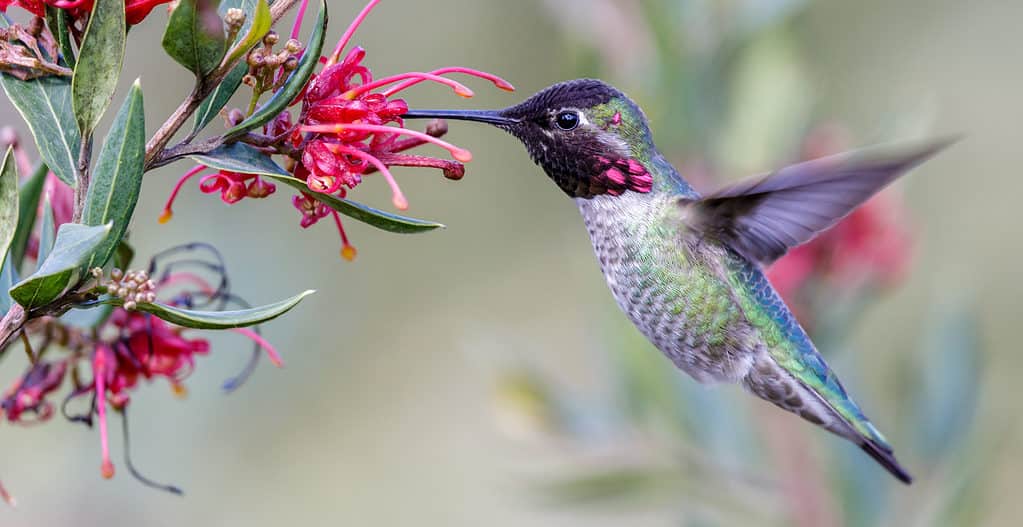
One of the most prevalent hummingbirds along the Pacific Coast is Anna’s hummingbird (
Calypte anna).
©yhelfman/Shutterstock.com
Green Hermit
One of the bigger hummingbird species, the green hermit (Phaethornis guy), has a body length of roughly 5.3 inches. Rarely among bird species, where males often are more flamboyant, do the males have shorter tails than the females. Nevertheless boldly shake their white-tipped tail feathers throughout competitive performances with other males as they compete for prospective suitors. Their range extends from northern South America to southern Central America.

One of the bigger hummingbird species, the green hermit (Phaethornis guy), has a body length of roughly 5.3 inches.
©Jiri Hrebicek/Shutterstock.com
White-Necked Jacobin Hummingbird
With its brilliant white belly, regal tail, and bright blue head, a male white-necked jacobin hummingbird (Florisuga mellivora) is difficult to overlook. They can be discovered all the way up to the Caribbean island of Trinidad & Tobago, between Mexico and southern Brazil. This species of hummingbird, like many others, consumes more than just nectar and tiny insects, which provide it with protein. It uses the “hawking” method to snag its insect meal in midair.

With its brilliant white belly, regal tail, and bright blue head, a male white-necked jacobin hummingbird (Florisuga mellivora) is difficult to overlook.
©Martin Pelanek/Shutterstock.com
Green-Throated Mango
Anthracothorax viridigula, sometimes known as the green-throated mango, can be seen along a brief stretch of the Atlantic Coast to the north and south of the exit of the Amazon River. It prefers mud and wetland habitats.
Although there is still much to learn about the species, it is documented that the destruction of habitat for mangroves and swamps in Trinidad has resulted in a fall in the population of this species. It remains a species of least concern according to the International Union for Conservation of Nature and Natural Resources.
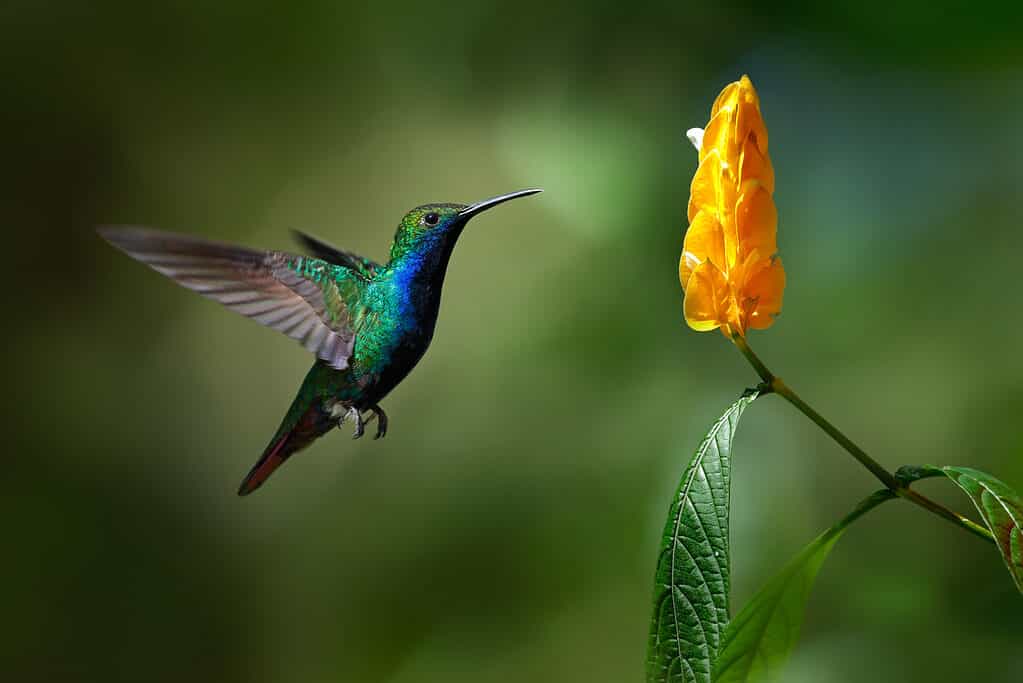
Anthracothorax viridigula, sometimes known as the green-throated mango, can be seen along a brief stretch of the Atlantic Coast to the north and south of the exit of the Amazon River.
©Ondrej Prosicky/Shutterstock.com
Velvet-Purple Coronet
The velvet-purple coronet (Boissonneaua jardini), which is indigenous to the moist foothill woods of western Colombia and northwestern Ecuador, has such a deep color that it may initially look black, especially if it is dark outside. But there are flashes of brilliant violet, blue, and green when the light hits its iridescent feathers. Its wings’ undersides contrast with that with a chestnut hue.
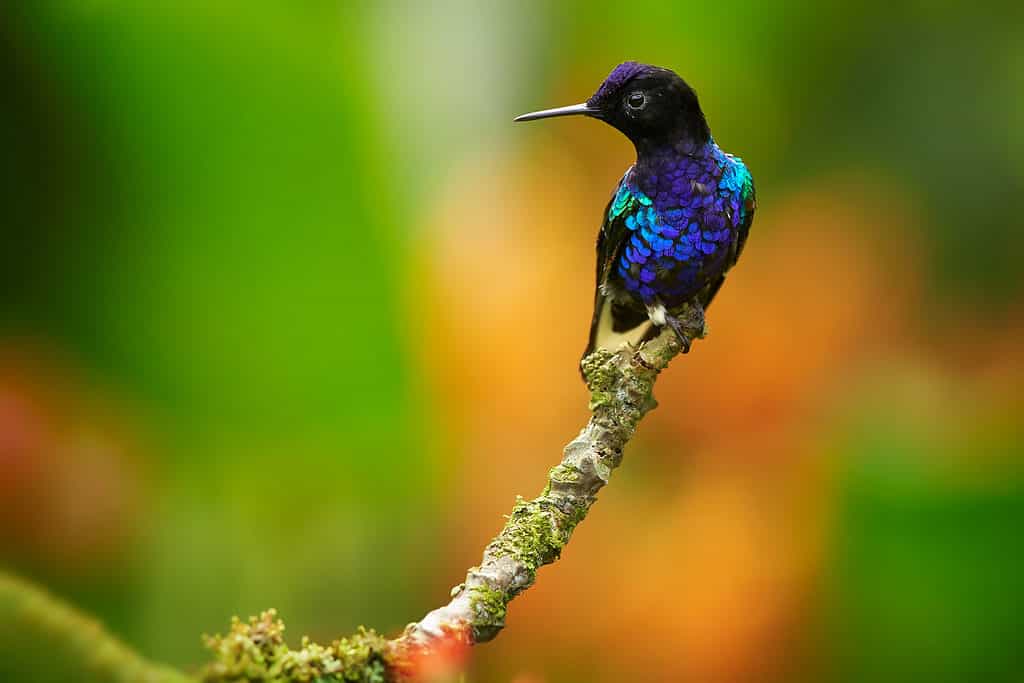
The velvet-purple coronet (Boissonneaua jardini) has its habitat in moist foothill woods.
©Martin Mecnarowski/Shutterstock.com
Summary of 12 Beautiful Types of Hummingbirds
| Name of Hummingbird | Location |
|---|---|
| Rufous-Breasted | Panama to the Caribbean |
| Marvelous Spatuletail | Northern Peru in the Utcubamba Valley |
| Booted Racket-tail | Colombia, Venezuela, south to Bolivia |
| Long-tailed Sylph | Andes Mountains from Venezuela to Bolivia |
| Ecuadorian Hillstar | Southern Columbia to Ecuador |
| Rufous-Crested Coquette | Southern Central America and South American Pacific Coast |
| Ruby-Topaz | Trinidad and Tobago, southern Panama, northern South America |
| Anna’s | Pacific United States coast to British Columbia |
| Green Hermit | Northern South America to southern Central America |
| White-Necked Jacobin | Between Mexico and Southern Brazil |
| Green-throated Mango | Around the mouth of the Amazon |
| Velvet-Purple Coronet | Western Columbia and northwestern Ecuador |
Thank you for reading! Have some feedback for us? Contact the AZ Animals editorial team.

